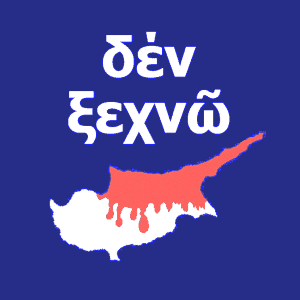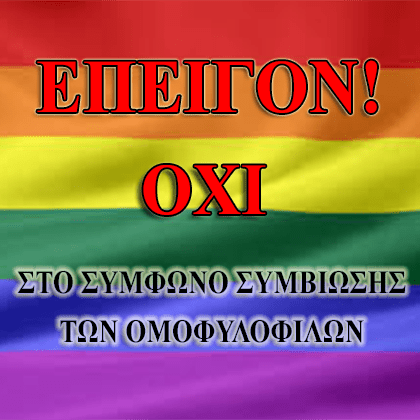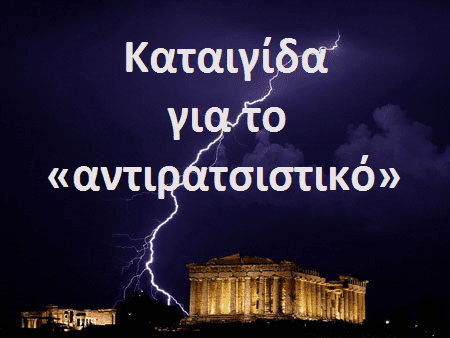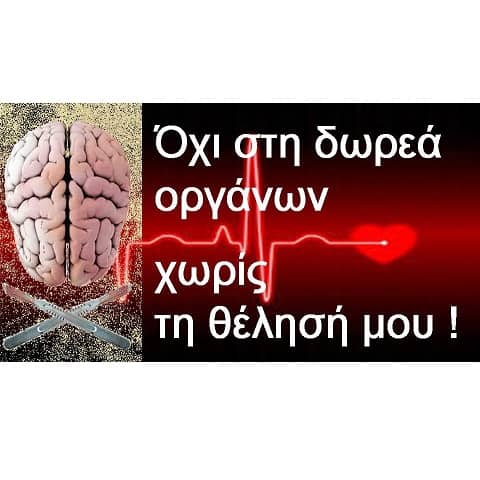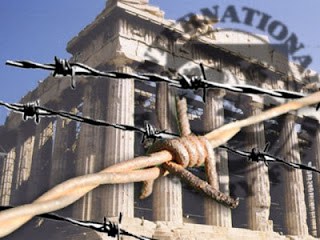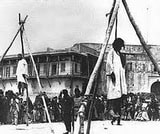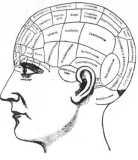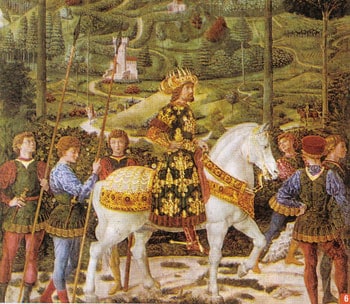
(This lecture was presented at the Conference «Saint John’s Readings», which took place under the blessing of His Beatitude Metropolitan of Sofia and Patriarch of Bulgaria, Neophytos, in Sofia of Bulgaria, on the 9th and 10th of June 2017, and which was organized by the parish of the Ancient Church of Saint Great Martyr George (The Rotunda)
Reverend Fathers,
Dear brothers in Christ,
First of all, we want to express our gratitude to His Beatitude, Metropolitan of Sofia and Patriarch of Bulgaria, Neophytos.
Second, we want to thanks the Initiative Committee of the Conference «Saint John’s Readings» for the honour of inviting us in this Conference.
Finally, we want to say that our Bishop, His Eminance Metropolitan of Piraeus Serafim gives his blessing to our Conference and wishes to all the enlightment from the Holy Spirit.
The subject that we will speak about is «How Orthodoxy overcame the false-synod of Ferrara-Florence».
In the Orthodox East, in the fifteenth (15th) century, before the fall of Constantinople in οne thousand four hundred and fifty three (1453), mainly two conflicting sides were formed.
The one side, that of the latinophrones (latin-minded) and in favour of the Pope, led by the dissenter and latinophrone Vessarion of Nice, who, finally, was fully incorporated in the heresy of Papism and became Cardinal, proposed alliance with the West as a repulsion against the Turkish danger. He influenced decisively the emperor Ioannis eighth Palaiologos, who was concerned about the fate of the empire, and he swept him in the degrading signing of the «unifying» decree of the false-synod of Ferrara-Florence (1438-1439), just fourteen years before the fall of Constantinople.
The other side, that of the Orthodox, with leader Saint Mark Evgenikos, Archbishop of Ephesus, struggled to reject the false-union with the heresy of Papism and influenced most of the clergy and the people. He wanted the nation to rescue all its cultural entity and self-consciousness, because he knew the undeniable historical truth that the nations are lost, not when they lose their statehood, but when they lose their cultural identity, that is to say their soul. Since any assistance from the West in diplomatic negotiations required the latinization of the Orthodox, the nation should rely on its own forces. Although they foresaw that the submission to those who had different faith (to the Turks) was unavoidable, they believed that the conditions of the revival and regression would be created. Under the guise of help, the Westerners would essentially conquer Constantinople once again. Both of them would be conquering. But in the conquering by the Turks would remain the advantage of national despondency, that is to say that the nation would not betray willingly its own traditions, would not sacrifice the Orthodoxy, which was the most essential element of its national identity. In addition, the great cultural supremacy over the Turks and the totally different religion were unfavorable factors for the complete islamization, whereas with the Franks the latinization would be easier.
The false-union of Ferrara-Florence, imposed from above, had political motives, completely unrelated to the spiritual aim of the true peace and union. That is why it was turned down from below and it is now, as K. Heussi notices, a meaningless scrap of paper[31] . The Orthodox, because of the urgent and anguished need to get help, instead of going to the city of Basel to support the synod against the Pope, they were drawn to a so-called «synod» of an unusual process and duration, and they all gave in to the demands of the heretic papists, and offered valuable assistance and recognition to the heresy of Papism, without receiving the agreed return. First, they strengthened, with their participation, the prestige of the chief of the heretics Pope Eugenius fourth IV, who was defrocked by the reformist Synod of Basel, and thus they contributed to the dissolution of that Synod, and also to the hopes of democratizing the sovereign monarchy of the chief of the heresy, the «Pope». Then, they legitimized, by the decision of the false-synod, the goals of the «Popes», on the Papal primacy and sovereignty over the Church. Above all, however, they offered to the heresy of Papism the basis, on which the next false-synods of Trident (1545-1563) and the First Vatican (1870) relied on, for the dogmatization of the Papal primacy and infallibility. What the heresy of Papism had tried to achieve for ages, by the systematic distortion of the texts, was offered by the latinophrone and Popephile «Orthodox» at the false-synod of Florence.
It was that offer of the latinophrones to the heresy of Papism that the Orthodox people of Constantinople, guardian of faith, Saint Mark Eugenikos, and Patriarch Gennadios Scholarios struggled against and succeeded to overrule[32] .
1. The anger of the Orthodox people of Constantinople, guardian of faith
In Constantinople the Orthodox people had not accepted the false-union, because they wanted an commendable union with the Papists, on the basis of the Orthodox Faith, Tradition and Life[33] . Thus, the people were enthralled by the strong attitude held by Saint Mark during the false-synod. Ηe was received triumphantly and he was considered a real fighter of Orthodox faith. The Orthodox people considered Saint Mark to be the only Hierarch, who had the courage and the ability to defend the correct doctrinal teaching of the Church.
The return of the Orthodox delegation to Constantinople was a stimulus for the general expression of the unease of the ecclesiastical conscience. On the First of February of the year one thousand four hundred and forty, disembarked at Constantinople, coming back from Florence, the latinophrone Greek Archpriests, whom the multitude of people expected, with obvious anxiety. The people of Vasilevousa (Reigning City), for two whole years had less agony for the threat of the Turks and more agony whether, in Florence, the sacrosanct of their Fathers’ faith was at risk. The people wanted to know whether Orthodoxy had won in Florence. The traitors of Orthodoxy, sensing the people's wrath, were answering regretfully: «we sold our faith; we exchanged the piety for the impiety; betraying the clean sacrifice, we became unleavened…»[34]. According to the historian named Dukas, the traitors of Orthodoxy, completely disgraced and fearing the outcry of the Orthodox crew, cursed the time when they signed the «unifying» decree of Florence : «this right [hand] signed, they were saying, may it be cut; the tongue confessed, may it be eradicated»[35].
The people of Constantinople from the very first moment took sides with Saint Mark Eugenikos and they forced the venal traitors of Orthodoxy to hit their breasts, demonstrating repentance, because they participated in the tragedy of Florence. The people had already heard from the mouth of Saint Mark that the false-synod of Florence would be repudiated and the false-union would be annulled[36] . Even emperor Ioannis, fearing a possible revolt of the people, did not speak for the decree of Florence[37]. The people, under the instructions of Saint Mark Eugenikos, were not afraid of the Patriarch nor of the Emperor. Sylvestros Syropoulos writes that «the faithful of Constantinople became more determined, disdained the events at the Synod, and ceased to commemorate the King»[38]. The Orthodox clergy of Constantinople refused to serve the Divine Liturgy together with the Latinophrones. In Constantinople «neither the Pope was commemorated, nor the decree was read, nor was something else innovated»[39] .
The uprising of the Orthodox people against the decree of Florence was such, that soon almost all Greek bishops, who had signed the false-union, were forced to revoke their signature and make a newer statement[40] . The reaction of the people of Constantinople against the Latinophrones, over time, appeared larger and more organized. «The Latinophrones were avoided. The supporters of the false-union were more and more isolated. The faithfull would not go to the churches where the Latinophrones served the Divine Liturgy. Even those, who visited them out of curiosity, were avoided by their friends»[41]. The Orthodox people did not want to have ecclesiastical communion with the Latinophrone bishops and clerics. Saint Mark, exiled in Lemnos, in his letter to the hieromonk Theophanes in Evripos describes this reaction of the Orthodox people : «Most of the brothers, encouraged by my exile, reprimand the scoundrels and offenders of the right faith and of paternal institutions, they discredit them everywhere as scums, and do not tolerate either to serve the Divine Liturgy with them, or to commemorate them as Christians»[42].
The above description shows the attitude of the people and their contribution to the reestablishment of Orthodoxy. The people were well-versed in their faith and they also knew to take the right attitude, when this faith would be betrayed. And this attitude was the interruption of the ecclesiastical communion with the latinophrones.
2. Saint Mark Eugenikos, Archbishop of Ephesus, the atlas of Orthodoxy
Saint Mark Eugenikos, like all the Holy Fathers after the Schism, fought against the heretic Papism, who, taking advantage of the complete attenuation of the Roman Empire, wished to subjugate Orthodoxy, which it would be surrendered to him, in advance, if he helped, as he was saying, militarily and economically the collapsing empire. It is a fact that, if it hadn’t been for Saint Mark, by God’s goodwill, in this crucial period for Orthodoxy, the whole East would have been turned to Frankism and latinized, and the true faith would have disappeared from the earth.
The important thing is that Saint Mark not only fought during the duration of the false-synod of Florence-Ferrara, which is common knowledge, but he also fought after the signing of the agreement and the return to Constantinople. In fact, his last fights, who to many are unknown, are perhaps more important, because we could say that during the false-synod of Ferara-Florence his efforts were unsuccessful, since the false-union of the Orthodox Church with the heresy of Papism was, finally, signed, whereas, after the false-synod, Saint Marks’ struggles were absolutely successful, because they caused the reeinstatement of Orthodoxy and the condemnation of both the false-synod of Florence and the heresy of Papism.
Saint Mark Eugenikos, after returning from Florence, had one and only purpose. To fight and to prove that the false-synod of Florence, as well as the decree of the false-union between Orthodoxy and Papism, which was signed by all, were illegal, un-canonical, unorthodox and invalid. The Kaiaphas-minded council of Florence should be renounced, at all costs, by all Orthodox people. The brave Bishop of Ephesus put the false-synod of Florence and its «unifying» decree to the judgment of the ecclesiastic conscience of the Orthodox people, the guardians of the Orthodox Church.
Further, Saint Mark interrupted the ecclesiastic communion with all those, who had signed in Florence the false-union, and with those, who followed them. He refused to have any contact with the new latinophrone Patriarch of Constantinople, Metrophanes, and his like-minded.
He states : «So, having been separated from them [the latinophrones], in order to be united with the holy fathers and teachers, I make my opinion clear to all through my writings, so that anyone, who wants to judge, shall know whether I rejoiced with the healthy doctrines, or I have accepted the union which has been founded on distorted doctrines and teachings»[43].
Sylvestre Syropoulos, referring to the process of the election of the new Patriarch, says that Saint Mark had no ecclesiastic communion with the Synod either. «The King and the councilors did not discuss at all the issue of the participation of Mark of Ephesus, because they found that he was separated from all those, who formed the Synod»[44] .
Saint Mark, not only stopped having ecclesiastic communion with the latinophrones, but he also urged the clerics and the people to discontinue ecclesiastic communion with the chief of the heresy, the «Pope», and the Greco-Latins.
He says : «Avoid, therefore, you, also, brothers, the communion with the ex-communicated and the commemoration of the ones disqualified for commemoration. Here, I, the sinful Mark, tell you that the one, who commemorates the pope as an orthodox archpriest, is guilty of fulfilling the complete latinization, and he will even go so far as to cut his beard. The latinophrone will be judged together with the Latins and he will be considered a violator of the faith»[45]. «Avoid, therefore, brothers, the innovators and those who approve of the latin innovation»[46]. «Avoid them, brothers, and avoid communion with them. Because, these are false-apostles, devious workers, transformed into apostles of Christ». And he concludes : «Resist, observing the written and the unwritten traditions, which you have received, so that you may not be alluded by the fallacy of the unlawful ones and fall off from your foundation»[47].
We could say that Saint Mark Eugenikos has, regarding the matter of the interruption of the ecclesiastic communion, something unique, which, on the one hand will be a maximal loss if not noted, on the other indicates the certainty and safety, he felt, away from the bearers of the heresy. The unique thing is that he wanted to maintain the interruption of the ecclesiastic communion, not only during his life, but also after his death.
Thus, when Saint Mark’s end was drawing near, and the other Orthodox fighters, who supported him, were close to him, as well as many other officials and unofficial people, he gave the last instructions, which speak about the after-death interruption of his ecclesiastic communion. This text is a confessional heirloom, which alone characterizes the saint. It shows that, while he is at the end of his life, he has a youthful pulse and strength. It shows that the saint had understood very well the value of the interruption of the ecclesiastic communion and the security he felt within this interruption, and in addition, that, leaving from his present life, he had the pure and fair faith as the greatest qualification for meeting the Lord. He had the feeling that, since he had interrupted the ecclesiastic communion from this life, he would meet those saints, who had interrupted the communion, those had been persecuted for the faith, the martyrs of truth, and all those who had loved the purity and the integrity of the faith and had suffered for it. With all those he was identified in the present life and, for this reason, he wanted them to know that, after his death, he would remain in that faith.
The basic points of his last speech are the following : He did not want the latinophrones, with whom he had interrupted ecclesiastic communion for the matters of faith, to attend neither his funeral nor his memorial; especially, he didn’t want them, that is the Patriarch and his Archpriests, to wear their vestments in the pretext of honoring him. He did not want the majority of people to think, not even to have suspicions, that he had ecclesiastic communion with them secretly. He did not want any ecclesiastic communion with the latinophrones, the Patriarch and the Archpriests, not even after his death. He stated that he was convinced that the more he moved away from them ecclesiastically, the more he approached God and was united with the truth and the saints. On the contrary, the more he approached them, the more he distanced himself from God and the teachers of the Church. Finally, he says that he did not want any ecclesiastic communion, so that the unmixable are not mixed with the faith[48] .
Saint Mark safeguarded the faithful from the danger of latinization and stirred up every Orthodox conscience against the papal heresy, which cold invent everything in order to enslave the Orthodox Church. All the Orthodox complied with the awakenings of the leader, Saint Mark, and they did not serve together with the latinophrones, nor did they communicate with them, and they did not commemorate the false-bishops, who had signed the false-union of Florence.
3. Gennadios Scholarios. The first Patriarch after the Fall of Constantinople
On the side of Saint Mark Eugenikos stood Patriarch Gennadios Scholarios, not as a simple supporter or an important member. He is the later embodiment of Saint Mark, his identical image. For this reason, Saint Mark chose him, just before he died, to be the successor in his struggles. He even believed, and he was therein justified, that Patriarch Gennadios would struggle more successfully, thanks to his many and unquestionable qualifications, his great political and administrative experience and the ability to influence the emperor, as a higher state official and counselor. Patriarch Gennadios Scholarios, with his vigorous and continuous struggles, rendered, practically, inapplicable the «unifying» decree of the false-union of Ferrara-Florence, influencing the emperor Ioannis Palaiologos and expressing the consciousness of the people of the Church.
It should be noted that, apart from Saint Mark Eugenikos, who resisted the humiliations and the pressure and did not sign the «unifying» decree of the false-union, three more persons escaped secretly, shortly before the signing, so as not to accept pressure: the brother of the emperor, Despot Dimitrios Palaiologos, the well-known philosopher of Mystras Georgios Plithon-Gemistos and Patriarch Gennadios Scholarios, and some others.
One would have expected that, after the return of the delegation to Constantinople, Gennadios would fall into the king's disfavor, and would lose the high administrative powers he held, as the King’s general secretary in the palace, and as general judge of the Romans, that is to say, something like president of the Supreme Court of the State. However, it was the opposite that took place. He even held his position as an official speaker every Friday in the palace, on the theological and ethical issues, with the presence of the King and the Senate.
The culmination of this Emperor’s stance, favorable to the Orthodox, was that he allowed Scholarios to respond freely to the representative of the heresiarch, the «Pope», that is the theologian, so called «bishop» of Kortonis, Bartholomew Lapacci, during the discussions at the palace of Xylala, carried out in the year οne thousand four hundred forty-four (1444), or, according to others, in οne thousand four hundred and forty-five (1445)[49] . In these discussions, the aim of the heretic papists was the renewal of the «unifying» decree of the false-union of Ferrara-Florence. For this reason, the cardinal and nephew of the chief of the heresy, the «Pope», Francesco Condulmer, was present, as well as many latinophrones. The argumentation of Gennadios Scholarios was overwhelming. The official theologian of the heresiarch, the «Pope», suffered a humiliating defeat, and none of those, who were present, dared to give a helping hand to the so-called «bishop», who received strong blows. Being overwhelmed by Gennadios’s presence, Isidoros of Russia, already a cardinal, tried for many years to collect material from the minutes (acts) of the Synods, in order to face Gennadios, but he did not dare to do so, when in οne thousand four hundred and fifty-two (1452) a new attempt to renew the «unifying» decree was made.
The result of the discussions at the palace of Xylala was not only a spectacular victory, with only temporary impressions, in the theological dialogue. It was, essentially, a correction and a revocation of the «unifying» decree of Florence. After the discussions, a volume was drawn up, signed by the majority of those, who had signed the decree of Florence, wherein they renounced it for a second time, after their first renouncement, which had been made immediately after their return from Italy. The thought about signing a new libel of faith belongs to the king, who wanted, with this action, to reject from his conscience the burden of the humiliating treaties of Florence[50] .
The outcome of the discussions at Xylala, as well as the clearly pro-Orthodox attitude of the emperor, despite his pretense of latinism, was the vindication of Gennadios Scholarios’s decision to maintain his positions and to influence closely the decisions of the king.
With the discussions at the palace of Xylala, Gennadios Scholarios began his new role as leader of the Orthodox. He abandoned silence and hiding behind the shadow of Saint Mark Eugenikos, and he suddenly came to the open arena, recognized by all as a leader, not only because of the indication made by Saint Mark Eugenikos, but also because of his undisputed qualifications and his solid and unshaken piety, which made him the true successor of Saint Mark. From οne thousand four hundred and forty-five (1445) until the fall of Constantinople in οne thousand four hundred and fifty-three (1453), under two emperors, Ioannis Palaiologos, to οne thousand four hundred and forty-eight (1448), and Konstantinos Palaiologos, from οne thousand four hundred and forty-nine (1449) to οne thousand four hundred and fifty-three (1453), and in two states of his life, that of a lay person, until οne thousand four hundred and fifty (1450), and that of a monk, from then on, he struggled with all his forces to achieve two goals: the overturn of applying the humiliating decree of Florence and the persuasion of the dukes and of the people that the salvation of Constantinople is more secure by relying on their own forces and by organizing the defense and strengthening of the City with their own financial means, no matter the sacrifices, rather than waiting for the dubious help of the chief of the heresy, the «Pope», in exchange for betrayal of the faith[51] .
4. The Synodical condemnation of the false-union of Ferrara-Florence
The struggles of the Orthodox clergy and people, of Saint Mark Eugenikos and Gennadios Scholarios, had the desired effect. The Orthodox Church with a pan-orthodox synodical reaction renounced and deprecated the «unifying» decree and the so-called «synod» of Florence as «predatory, vile, abominable, unconstutional, false-synod, etc»[52]. This was done with the Synod of Moscow in οne thousand four hundred and forty-one (1441)[53], the Synod of Jerusalem in οne thousand four hundred and forty-three (1443)[54], the Apology of the Clergy of Constantinople to the emperor Ioannis Palaiologos in οne thousand four hundred and forty-three (1443)[55], the special acts of the Churches of Moldavia and Moldavlachia, Serbia and Iberia, which condemned the false-synod of Florence[56], the Synod of Constantinople in οne thousand four hundred and fifty (1450)[57], the Synod of Constantinople in οne thousand four hundred and eighty-four (1484)[58], the response of the Orthodox Patriarchs, of Constantinople Ieremias, of Antioch Athanasios and of Jerusalem Chrysanthos, to the Anglicans, who didn’t give an oath (1716-1725), by which the Florentine Synod is rejected, characterized as «a council of Kaiafa, predatory, violent, etc»[59], and finally the Synod of Constantinople in οne thousand seven hundred and twenty-seven (1727) [60].
Epilogue - Proposals
Respectable Fathers,
Dear brothers in Christ,
It would not be audacious at all, nor exaggerating, to support that in our days we are witnessing a revival of Ferrara-Florence. The false-synod of Crete, which was convened at the end of June 2016, is a new Ferrara-Florence Synod. It is not holy, nor great, nor a Synod. It is a predatory, Florentine, heretic, ecumenistic false-synod. That is why, on the basis of what we have developed above, we believe that it is an absolute necessity that the Local Orthodox Churches, and in particular those that have not participated in it, as well as a new Pan-Orthodox Synod should (a) condemn the so-called «synod» of Crete as a predatory, heretic and ecumenistic synod, (b) reject the texts as heretic, (c) condemn the organizers, the protagonists, the participants in it, the signatories and the acceptors of its heretic texts, (d) condemn the interchristian and interreligious syncretistic Ecumenism as pan-heresy (e) decide to withdraw all Orthodox Local Churches from the so-called «World Council of Churches», that is to say of Heresies (f) terminate every common appearance of the Orthodox with the those of different faith and the heretics, and (g) resign from the sterile dialogue between the Orthodoxy and any kind of heretics.
Reverend Fathers,
Dear brothers in Christ,
May the Holy Triune God make us worthy of experiencing the Pan-Orthodox Synodical condemnation of the false-synod of Crete, by your blessings.
Thank you!
[1] K. Heussi, Kompendium der Kirchengeschicte, Tübingen 1909, σ. 280.
[2] ΠΡΩΤΟΠΡΕΣΒ. ΘΕΟΔΩΡΟΣ ΖΗΣΗΣ, «Ἡ ἅλωση τῆς Πόλης κατά τόν Γεννάδιο Σχολάριο», Θεοδρομία Η2 (Ἀπρίλιος - Ἰούνιος 2006) 219-239.
[3] Β. ΣΤΑΥΡΙΔΗΣ, «Φερράρας-Φλωρεντίας σύνοδος», ΘΗΕ, τ. 11ος, στ. 1020.
[4] ΔΟΥΚΑΣ, Historia Byzantina, ἐκδ. Bekker, Βόννη 1834, σ. 216.
[5] Κ. ΠΑΠΑΡΗΓΟΠΟΥΛΟΣ, Ἱστορία τοῦ Ἑλληνικοῦ Ἔθνους, ἐκδ. ΣΤ΄, τ. Ε΄, Ἀθῆναι 1932, σ. 276.
[6] ΑΓΙΟΣ ΜΑΡΚΟΣ ΕΥΓΕΝΙΚΟΣ, Ἐπιστολή πρός Θεοφάνην, P.G. 160, 1097C.
[7] Π. ΓΡΗΓΟΡΙΟΥ, Σχέσεις Καθολικῶν καί Ὀρθοδόξων, Ἀθῆναι 1958, σσ. 524-525.
[8] ΣΥΛΒΕΣΤΡΟΣ ΣΥΡΟΠΟΥΛΟΣ, Vera historia Unionis non verae inter Graecos et Latinos, sive concilii Florentini exactissima narratio, graece scripta per Sylvestrum Sguropulum, ἐκδ. Rob. Greyghton, Hagae 1660, ΧΙΙ, κεφ. Β΄, σ. 332.
[9] Ὅ. π. σσ. 331-332.
[10] ΓΕΝΑΔΙΟΣ ΣΧΟΛΑΡΙΟΣ, Κατά τῆς προσθήκης…, P.G. 160, 723D.
[11] JOSEPH GILL, Ἡ Σύνοδος τῆς Φλωρεντίας, μετ. Καλοῦ Τύπου, Ἀθῆναι 1962, σσ. 405, 407.
[12] ΑΓΙΟΣ ΜΑΡΚΟΣ ΕΦΕΣΟΥ, Ἐπιστολή πρός Θεοφάνην, P.G. 160, 1097AB.
[13] «Ἔκθεση τοῦ ἁγιωτάτου μητροπολίτου Ἐφέσου, μέ ποιό τρόπο δέχθηκε τό ἀξίωμα τῆς ἀρχιερωσύνης καί δήλωση τῆς Συνόδου, πού ἔγινε στήν Φλωρεντία», Patrologia Orientalis, Τοme XV, Αu Concile de Florence, σσ. 304-308.
[14] Σ. ΣΥΡΟΠΟΥΛΟΣ, Τά ἀπομνημονεύματα ΧΙΙ, σ. 548.
[15] ΑΓΙΟΣ ΜΑΡΚΟΣ ΕΦΕΣΟΥ, Ἐπιστολή πρός Θεοφάνην, P.G. 160, 1097D, 1100A.
[16] ΣΠΥΡΙΔΩΝ Π. ΛΑΜΠΡΟΥ, Παλαιολόγεια καί Πελοποννησιακά, τ. Α΄, σ. 26
[17] ΙΩΑΝΝΗΣ ΚΑΡΜΙΡΗΣ, Τά Δογματικά καί Συμβολικά Μνημεῖα τῆς Ὀρθοδόξου Καθολικῆς Ἐκκλησίας, τ. Α΄, Ἀθῆναι 1960, σ. 429.
[18] ΑΓΙΟΣ ΜΑΡΚΟΣ ΕΦΕΣΟΥ, Ἀπολογία, P.G. 160, 536CD.
[19] Περί τοῦ χρόνου τῶν συζητήσεων βλ. O. KRESTEN, Eine Sammlung von Konzilsakten aus dem Besitze des Kardinals Isidoros von Kiev, Wien 1976, σ. 31 ἑξ.
[20] ΓΕΝΝΑΔΙΟΥ ΣΧΟΛΑΡΙΟΥ, Ἄπαντα τά εὑρισκόμενα, ἐκδ. L. PETIT – X. SIDERIDES – M. JUGIE, Oeuvres Completes de Georges Scholarios, τ. ΙΙΙ 99-100, Paris 1928-1936.
[21] ΠΡΩΤΟΠΡΕΣΒ. ΘΕΟΔΩΡΟΣ ΖΗΣΗΣ, Γεννάδιος Β΄ Σχολάριος, Βίος-Συγγράμματα-Διδασκαλία, ἔκδ. Β΄ Πατριαρχικό Ἴδρυμα Πατερικῶν Μελετῶν, Ἀνάλεκτα Βλατάδων 30, Θεσ/κη 1988, σσ. 157, 158, 160, 161.
[22] ΙΩ. ΚΑΡΜΙΡΗΣ, Τά Δογματικά καί Συμβολικά Μνημεία τῆς Ὀρθοδόξου Καθολικῆς Ἐκκλησίας, τ. Ι, Ἀθῆναι 1952, σσ. 28-29
[23] A. PICHLER, Geschichte der kirchlichen Trennung zwischen dem Orient und Occident, Mϋnchen 1865, τ. ΙΙ, σ. 52 ἑξ. ΒΛΑΣΙΟΣ ΦΕΙΔΑΣ, Ἐκκλησιαστική Ἱστορία, τ. Β΄, Ἀθήνα 1994, σσ. 625-626.
[24] Ι. ΣΑΚΚΕΛΙΩΝ, Κατάλογος τῶν χειρογράφων τῆς Ἐθνικῆς Βιβλιοθήκης τῆς Ἑλλάδος, Ἀθῆναι 1892, σσ. 25-28. ΧΡΥΣΟΣΤΟΜΟΣ ΠΑΠΑΔΟΠΟΥΛΟΣ, Ἱστορία τῆς Ἐκκλησίας Ἱεροσολύμων, ἐν Ἱεροσολύμοις καί Ἀλεξανδρείᾳ, 1910, σσ. 439-442. Κ. ΠΑΠΑΡΗΓΟΠΟΥΛΟΣ, Ἱστορία τοῦ Ἑλληνικοῦ Ἔθνους, ἐκδ. ΣΤ΄, τ. Ε΄, Ἀθῆναι 1932, σσ. 277-278. Β. ΣΤΕΦΑΝΙΔΗΣ, Ἐκκλησιαστική Ἱστορία, ἔκδ. Β΄, Ἀθῆναι 1959, σ. 395. Π. ΓΡΗΓΟΡΙΟΥ, Σχέσεις Καθολικῶν καί Ὀρθοδόξων, Ἀθῆναι 1958, σ. 525. ΒΛΑΣΙΟΣ ΦΕΙΔΑΣ, Ἐκκλησιαστική Ἱστορία, τόμος Β΄, Ἀθήνα 1994, σ. 625. ΑΡΧΙΜ. ΣΠΥΡΙΔΩΝ ΜΠΙΛΑΛΗΣ, Ὀρθοδοξία καί Παπισμός. Ἡ ἕνωσις τῶν Ἐκκλησιῶν, τ. Β ΄, ἔκδ. Β΄ Ὀρθόδοξος Τύπος καί Σύλλογος «Ἅγιος Νικόδημος ὁ Ἁγιορείτης», Ἀθήνα 2014, σ. 79.
[25] ΝΕΚΤΑΡΙΟΣ ΙΕΡΟΣΟΛΥΜΩΝ, Ἀντίρρησις περί τῆς Ἀρχῆς τοῦ Πάπα, Ἰάσιο 1682, σ. 233 ἑξ. ΚΑΛΛΙΣΤΟΣ ΒΛΑΣΤΟΣ, Δοκίμιο ἱστορικό περί τοῦ σχίσματος τῆς Δυτικῆς Ἐκκλησίας ἀπό τῆς Ὀρθοδόξου Ἀνατολικῆς κλπ., Ἀθῆναι 1896, σ. 218 ἑξ. ΔΟΣΙΘΕΟΣ ΙΕΡΟΣΟΛΥΜΩΝ, Τόμος καταλλαγῆς, Ἰάσιο 1692, σσ. 422-431.
[26] ΑΡΧΙΜ. ΣΠΥΡΙΔΩΝ ΜΠΙΛΑΛΗΣ, ἔνθ’ἀνωτ., σ. 80.
[27] ΔΟΣΙΘΕΟΣ ΙΕΡΟΣΟΛΥΜΩΝ, ἔνθ’ἀνωτ., σ. 457 ἑξ. ΧΡ.ΠΑΠΑÏΩΑΝΝΟΥ, «Τά πρακτικά τῆς οὕτω λεγομένης ὑστάτης ἐν ἁγίᾳ Σοφίᾳ συνόδου (1450) καί ἡ ἱστορική ἀξία αὐτῶν», Ἐκκλησιαστική Ἀλήθεια 16 (1896/7) 117. ΑΓΙΟΣ ΝΕΚΤΑΡΙΟΣ ΠΕΝΤΑΠΟΛΕΩΣ, Μελέτη Ἱστορική περί τῶν αἰτιῶν τοῦ Σχίσματος, τ. Β΄, Ἀθῆναι 1912, σ. 257. ΑΡΧΙΜ. ΣΠΥΡΙΔΩΝ ΜΠΙΛΑΛΗΣ, ὅ. π.
[28] ΝΑΘΑΝΑΗΛ ΧΥΧΑΣ, Ἐγχειρίδιο περί τοῦ πρωτείου τοῦ Πάπα, ἐκδ. Ἀ. Δημητρακόπουλος, Λειψία 1869, σ. θ΄ - ιγ΄. A. PICHLER, ἔνθ’ἀνωτ., σ. 397. Ε. ΣΤΑΜΑΤΙΑΔΗΣ, Ἐκκλησιαστικά σύλλεκτα, Σάμος 1891, σσ. 26-29. ΧΡ. ΠΑΠΑΔΟΠΟΥΛΟΣ, Πρῶται σχέσεις Ὀρθοδόξων καί Λατίνων μετά τήν ἄλωσιν τῆς Κων/λεως, Ἱερουσαλήμ 1908, σ. 25 ἑξ. Γ. ΡΑΛΛΗΣ - Μ. ΠΟΤΛΗΣ, Σύνταγμα τῶν θείων καί Ἱερῶν κανόνων, Ἀθῆναι 1852/9, V1 143-147. ΙΩ. ΚΑΡΜΙΡΗΣ, Τά συμβολικά κείμενα τῆς Ὀρθοδόξου Καθολικῆς Ἐκκλησίας, σ. 25 ἑξ.
[29] MCC 37, 4435. ΙΩ. ΚΑΡΜΙΡΗΣ, ἔνθ’ἀνωτ., τ. 2, Ἀθῆναι 1953, σ. 788-820. ΠΡΩΤΟΠΡΕΣΒ. ΙΩ. ΡΩΜΑΝΙΔΗΣ, Κείμενα δογματικῆς καί συμβολικῆς θεολογίας τῆς Ὀρθοδόξου Καθολικῆς Ἐκκλησίας, τ. Β΄, ἐκδ. Π. Πουρναρᾶ, Θεσ/κη 2000, σσ. 384-431.
[30] J. MANSI, Sacrorum Conciliorum nova et amplissima Collectio. Florentie et Venetiis 1757/98, Parisiis 1899/1927, 37, 895. ΠΡΩΤΟΠΡΕΣΒ. ΙΩ. ΡΩΜΑΝΙΔΗΣ, ἔνθ’ἀνωτ., σσ. 489-501.
[31] K. Heussi, Kompendium der Kirchengeschicte, Tübingen 1909, p. 280
[32] ARCHPRIEST THEODOROS ΖISIS, «The fall of Constantinople according to Gennadios Scholarios», magazine Theodromia Η2 (April - June 2006) 219-239.
[33] Β. STAVRIDIS, «Ferrara-Florence synod», Religious and Μoral Εncyclopedia (ΡΜΕ), v. 11, p. 1020.
[34] DOUKAS, Historia Byzantina, ed. Bekker, Βόννη 1834, p. 216.
[35] Κ. PAPARIGOPOULOS, The history of the Greek nation , ed. 6th, v. Ε΄, Athens 1932, p. 276.
[36] ST. MARK ΕUGENIKOS, Letter to Theophanis, Patrologia Greaca (P.G.) 160, 1097C.
[37] P. GRIGORIOU, Relationships between Catholic and Orthodox, Athens 1958, p. 524-525.
[38] SILVESTROS SYROPOULOS, Vera historia Unionis non verae inter Graecos et Latinos, sive concilii Florentini exactissima narratio, graece scripta per Sylvestrum Sguropulum, ed. Rob. Greyghton, Hagae 1660, ΧΙΙ, chap. Β΄, p. 332.
[39] ibid pp. 331-332.
[40] GENNADIOS SCHOLARIOS, Against the addition…, P.G. 160, 723D.
[41] JOSEPH GILL, The Synod of Frorence, transl. Kalos Typos, Athens 1962, pp. 405, 407.
[42] ST. MARK OF EPHESUS, Letter to Theophanis, P.G. 160, 1097AB.
[43] «Report of his Holyness Metropolitan Bishop of Efesus, how he accepted the office of the high priesthood and declaration of the Synod, which took place in Florence», Patrologia Orientalis, Τοme XV, Αu Concile de Florence, pp. 304-308.
[44] S. SYROPOULOS, The memoirs ΧΙΙ, p. 548.
[45] ST. MARK OF EPHESUS, Letter to Theophanis, P.G. 160, 1097D, 1100A.
[46] SPYRIDON P. LAMPROU, Palaeologia and Peloponnesia, v. Α΄, p. 26
[47] IOANNIS KARMIRIS, The Dogmatic and Symbolic Monuments of the Orthodox Catholic Church , v. Α΄, Athens 1960, p. 429.
[48] ST. MARK OF EPHESUS, Apology, P.G. 160, 536CD.
[49] About the time of the discussions see O. KRESTEN, Eine Sammlung von Konzilsakten aus dem Besitze des Kardinals Isidoros von Kiev, Wien 1976, p. 31 ff.
[50] GENNADIOS SCHOLARIOS, Everything is finded, ed. L. PETIT – X. SIDERIDES – M. JUGIE, Oeuvres Completes de Georges Scholarios, p. ΙΙΙ 99-100, Paris 1928-1936.
[51] ARCHPRIEST. THEODOROS ΖISIS, Gennadios II Scholarios, Life-Texts-Teaching, ed. Β΄ Patriarchal Institute of Patristic Studies, Analekta of Vlatades 30, Thessaloniki 1988, pp. 157, 158, 160, 161.
[52] ΙO KARMIRIS, The Dogmatic and Symbolic Monuments of the Orthodox Catholic Church, v. Ι, Athens 1952, pp. 28-29
[53] A. PICHLER, Geschichte der kirchlichen Trennung zwischen dem Orient und Occident, Munich 1865, v. ΙΙ, p. 52 ff. VLASIOS FEIDAS, Ecclesiastical History, v. Β, Athens 1994, pp. 625-626.
[54] Ι. SAKKELION, List of manuscripts of the National Library of Greece, Athens 1892, pp. 25-28. CHRYSOSTOMOS PAPADOPOULOS, The History of the Church of Jerusalem, Jerusalem and Alexandria, 1910, pp. 439-442. Κ. PAPARIGOPOULOS, The history of the Greek nation, ed. 6th, v. Ε΄, Athens 1932, pp. 277-278. V. STEFANIDIS, Ecclesiastical History, ed. Β΄, Athens 1959, p. 395. P. GRIGORIOU, Relationships between Catholic and Orthodox, Athens 1958, p. 525. VLASIOS FEIDAS, Ecclesiastical History, volume Β΄, Athens 1994, p. 625. ΑRCHIM. SPYRIDON MPILALIS, Orthodoxy and Papism. The union of the Churches, v. Β ΄, ed. Β΄ Orthodoxos Τypos kai Syllogos “St. Nicodemus the Hagiorite”, Athens 2014, p. 79.
[55] ΝΕKTARIOS OF JERUSALEM, Objection of the Pope's domination, Iasi 1682, p. 233 ff. KALLISTOS VLASTOS, Historical essay on the schism of the Western Church from the Orthodox Eastern, etc., Athens 1896, p. 218 ff. DOSITHEOS OF JERUSALEM, Volume of distribution, Iasi 1692, pp. 422-431.
[56] ΑRCIM. SPYRIDON ΜPILALIS, op. cit., p. 80.
[57] DOSITHEOS OF JERUSALEM, op. cit, p. 457 ff. CH. PAPAIOANNOU, «The Minutes of the so-called synod in Saint Sofia (1450) and the Historical Value of them», Ecclesiastical Truth 16 (1896/7) 117. SAINT ΝΕCTARIOS OF PENTAPOLIS, Historical study on the causes of the Schism, τ. Β΄, Athens 1912, p. 257. ΑRCHIM. SPYRIDON MPILALIS, ibid.
[58] ΝΑTHANAIL CHYCHAS, Handbook on Pope's primacy, ed. A. DIMITRAKOPOULOS, Leipzig 1869, p. θ΄ - ιγ΄. A. PICHLER, op. cit, p. 397. Ε. STAMATIADIS, Ecclesiastical collectibles, Samos 1891, pp. 26-29.CH. PAPADOPOULOS, First relationships between Orthodox and Latins after the fall of Constantinople, Jerusalem 1908, p. 25 ff. G. RALLIS - Μ. POTLIS, Constitution of Divine and Holy Rules, Athens 1852/9, V1 143-147. ΙO. ΚΑRMIRIS, The symbolic texts of the Orthodox Catholic Church, p. 25 ff.
[59] MCC 37, 4435. ΙO. ΚΑRMIRIS, op. cit., v. 2, Athens 1953, p. 788-820. ARCHPRIEST. ΙO. ROMANIDIS, Texts of doctrinal and symbolic theology of the Orthodox Catholic Church , v. Β΄, ed. P. POURNARA, Thessaloniki 2000, pp. 384-431.
[60] J. MANSI, Sacrorum Conciliorum nova et amplissima Collectio. Florentie et Venetiis 1757/98, Parisiis 1899/1927, 37, 895. ARCHPRIEST ΙO. ROMANIDIS, op. cit., pp. 489-501.
Source: katanixis




